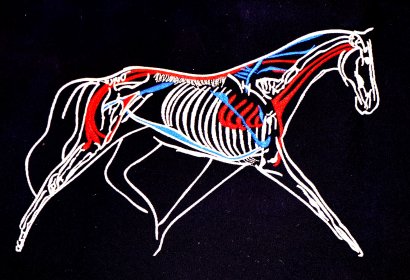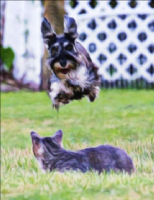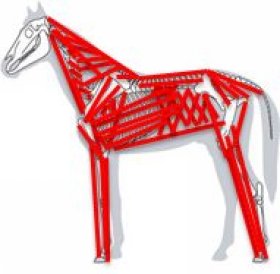2018 International Conference
Science Of Motion® 6th International Conference 2018
October 5th,6th & 7th
10AM-5PM

Location:
370 Crooked Creek Road
Eatonton, GA USA 31024
CHECK IN CODE SMIC18
Signature Hotel is
The Lodge on Lake Oconee
930 Greensboro Rd
Eatonton, GA 31024
(P) 706- 485-7785
(F) 706- 485-3996
Speakers, Friday,Saturday & Sunday-Jean Luc Cornille M.A, Dr Betsy Uhl D.V.M., Ph.D., DACVP
Michelle Osborn Ph.D., Dr. Gian Piero Brigati, (Italy) Diane Febles, DVM, CVA
Special guest, Photographer
David Mendelsohn
Jean Luc Cornille -Boing Boing. (elastic strain energy)
In 1998, Jose Morales wrote, “The temporal and linear stride variables reveal the efficacy of animal movement, and these are determined by the balanced movement of limbs joints. Accurate measurements of these variables, together with knowledge of the factors which modify them, would thus be highly desirable.” ( Jose Morales, DVM, PhD 1998)
Oliver does have very short legs, very little limbs joints and therefore, very little linear stride variables and yet, he bounces 3 times his own high.
In 2005, Payne and his team of researcher provided the explanation. “Most of the length change required for the work of locomotion, occurs not in the muscle fibers themselves but by elastic recoil of the associated tendons and muscles aponeurosis.” (The role of the extrinsic thoracic limbmuscles in equine locomotion. R. C. Payne, P. Veenman and A. M. Wilson. J. Anat. (2005) 206, pp 193-404)
Boing Boing, the talk explains the phenomenon of storage and reuse of elastic energy.
-Saddle Fitting, a Dynamics perspective.- FORCE

Betsy Uhl D.V.M., Ph.D., DACVP, a veterinary pathologist at the University of Georgia and Michelle Osborn Ph.D., a functional and comparative anatomist at Louisiana State University will be returning to the 2018 SOM International Conference. To replicate an approach that has had great success in treating athletic injuries in humans, they have been combining their expertise to develop 2D and 3D models to identify the sources of the pathomechanical stresses causing lameness and tissue damage in horses.
The Horse in a Functional and Dysfunctional Context: Insights from Tensegrity
Betsy and Jean Luc will present together to expand last year’s discussion of the critical role of tenesegrity in how the horse functions. Harmonized tensegrity allows movement to be effortless and beautiful because mechanical stresses are effectively dissipated; however when it is distorted or fails tissue and joints are damaged.
Misadventures in Tensegrity: Modeling Dysfunction
This is a hands-on workshop in which participants will use specimens and models to understand how postural asymmetries affect whole body tensegrity and can lead to localized overloading, lameness and tissue damage.
Asymmetries and the Rider: When are they a Problem?
Michelle is continuing her analysis of the rider and will present on body asymmetries, the asymmetrical forces they create and how they impact use of the hands. In particular she will discuss when asymmetry actually becomes a problem, how the use of the hands affects whole body posture, and how compensatory behaviors of the rider may affect the horse. She will also present preliminary observations and analysis of the effects of different saddle types on the rider.
“Equine Dentistry - More than just Teeth”
Diane Febles, DVM, CVA received her B.S. from Cornell University in 1982 and her DVM from the University of Georgia, College of Veterinary Medicine in 1988. She had a general equine practice until 2000 when she went back to school for advanced training in Equine Dentistry. For the past 18 years, her practice has focused exclusively on Equine Dentistry. She performs an average of 1400 dental procedures per year, focusing on balance of the horse’s mouth and its relationship to the whole horse.
Contact Helyn helyn@scienceofmotion.com for information


 twitter
twitter facebook
facebook pinterest
pinterest linkedin
linkedin